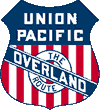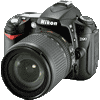

By Don Strack
First off, what makes a "tunnel motor" a "tunnel motor". Or why did these locomotives gain a special nickname.
These locomotives were designed to operate efficiently inside tunnels or snowsheds, giving us the first part "tunnel". "Motor" is a holdover from the early days, when steam was still king. Electric trams and trolleys were powered by electric motors, and driven by a Motorman, hence the vehicles were called "motors" by the Motormen. Some engineers carried this over to the then new diesel locomotives, and were in fact quite correct. The electric traction motors actually move the diesel locomotive, the diesel engine, simply drives an electric generator or alternator, to supply electric current to the traction motors. A diesel locomotive, should properly be called a diesel-electric locomotive.
Who first coined it, and how this nickname came about is unknown. But it sounds and reads a whole lot better than "tunnel diesel".
Southern Pacific (SP) started to have trouble with high horsepower locomotives. When the SD45's came along, the combination of long or numerous tunnels, snowsheds, and low speeds, found trailing units in a multiple unit consist experiencing high engine temperature shutdowns. As units dropped off-line, the train speed dropped, which increased time spent inside the tunnel, causing other units to overheat and also shutdown.
The SD45's, like most other locomotives of the time, drew their combustion air, and exhaust their combustion gases at the top of the locomotive. When running in their usual environment, engine operation is quite normal. Inside a tunnel, the situation changes, being enclosed the exhaust gases have nowhere to dissipate quickly. So they collect near the top of the tunnel roof, the trailing locomotives radiator fans, then draw these gases in as well as any clean air, to cool the hot engine cooling water running through the radiator cores. However, as the cooling air is not cold, none or little heat exchange can take place, so hot cooling water is returned to the engine, which only makes it hotter, until it exceeds the temperature limits. At which point the engine management system will shut the engine down, to stop any critical damage from occurring.
As units shutdown a number of problems can occur. Any shutdown units add their dead-weight to the train instead of contributing pulling power. The traction motors in the running locomotives, having more work to do, can start to overheat. If they exceed their short-time rating, they can burn out, unless the engine overheats first.
If enough locomotives shutdown, the train can have less than the required horsepower to actually move the train, and so stall, possibly inside the tunnel where the crew could experience breathing difficulties due to build up of exhaust fumes.
In the days of steam locomotives, SP had similar problems, this lead to the development of the Cab-Forward or Cab-Ahead locomotives.
In an effort to overcome these problems in the diesel era. Experiments were conducted, to separate where the cooling air was drawn from, and the exhaust gases were expelled. The "Elephant Eared" SD45's were the outcome. These metal shrouds fitted over the radiators caused the cooling air to be drawn over the walkway, which meant inside a tunnel or snowshed, the air at the bottom of the tunnel was hopefully cooler than the air and exhaust gases at the top.
Having successfully proved the theory, EMD developed the "tunnel motor" radiator. This was first applied to the SD45T-2's delivered in 1972.
The "tunnel motor" nickname, is actually applied to several slightly different EMD locomotives.
The model designations of, SD45T-2, SD40T-2, and SP's rebuilt SD45T-2R, have been proved official. This is what I discovered:
Once again, we return to the question of when, and if, SD45T-2 was an "official" EMD designation.
The recent discovery of records from EMD's Quality Assurance Department shows that the very first frame from the first Tunnel Motor EMD order 7336, for SP 9166-9208, was laid down on 13 Dec 1971. A notation in the QA record for that frame clearly shows the model as SD45T-2. The first unit was delivered to SP in February 1972.
So, yes, SD45T-2, and the whole T-2 nomenclature, was pure EMD right from the start, railfans and the railfan press were not involved.
With the understanding that each department at EMD (Engineering, Sales, and Service) was truly different in their methods, the T-2 designation was definitely part of EMD's engineering reference, with sales (locomotive specification books) and service (product reference books) coming to the game a couple of years after the fact. An example of the Service Department delay is that the service manual for the SD40T-2 is labeled as "SD40-2", with cooling system modification.
Remembering that EMD means "Every Model Different", my question was, if the T-2 designation was from EMD, or was it from railfans. I have my answer, it was from EMD.
Don Strack.
provisions in Section 29 of the Canadian
Copyright Modernization Act.








